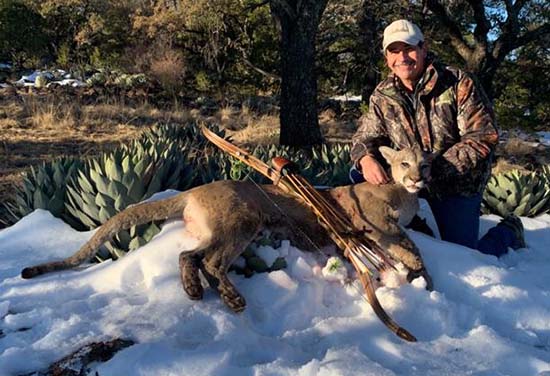Name: Paddington
Country Harvested: United States
State/Province: Minnesota
Year: 2021
Type of Game: Whitetail Deer
Equipment Used:
60# DAS recurve ,black eagle vintage arrows, woodsman broadheads.
Additional Info:
Photo: 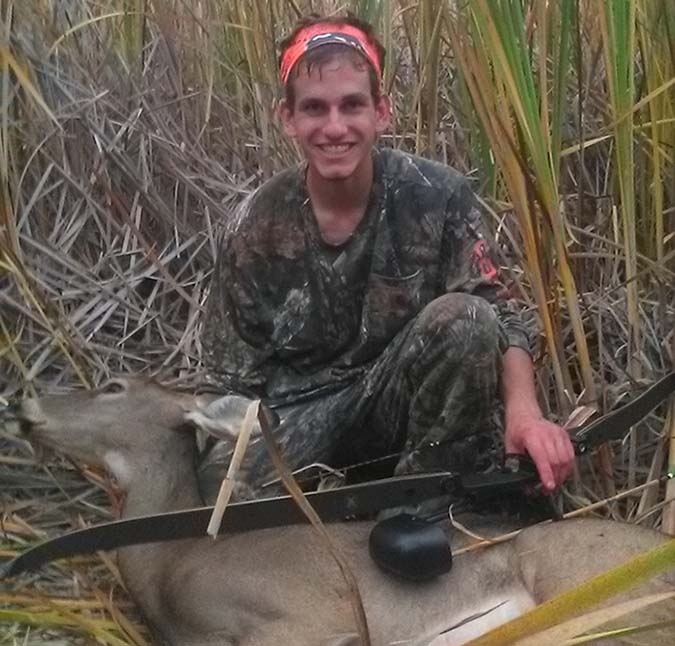
Ask the experts: 260.587.9501 | Customer Service
Call Us: 260.587.9501 | Customer Service
.jpg)
Welcome to the Archer's Den. Here you will find a gathering of traditional archery stories, tips and techniques, trophy animals taken with traditional bows, and plenty more. Stay a while and learn something. We hope you enjoy and even submit a trophy of your own, or leave a comment on a post.
Name: Paddington
Country Harvested: United States
State/Province: Minnesota
Year: 2021
Type of Game: Whitetail Deer
Equipment Used:
60# DAS recurve ,black eagle vintage arrows, woodsman broadheads.
Additional Info:
Photo: 
Name: Paddington
Country Harvested: United States
State/Province: Minnesota
Year: 2021
Type of Game: Whitetail Deer
Equipment Used:
DAS 60# recurve with black eagle vintage arrows and a German jager broadhead.
Additional Info:
Photo: 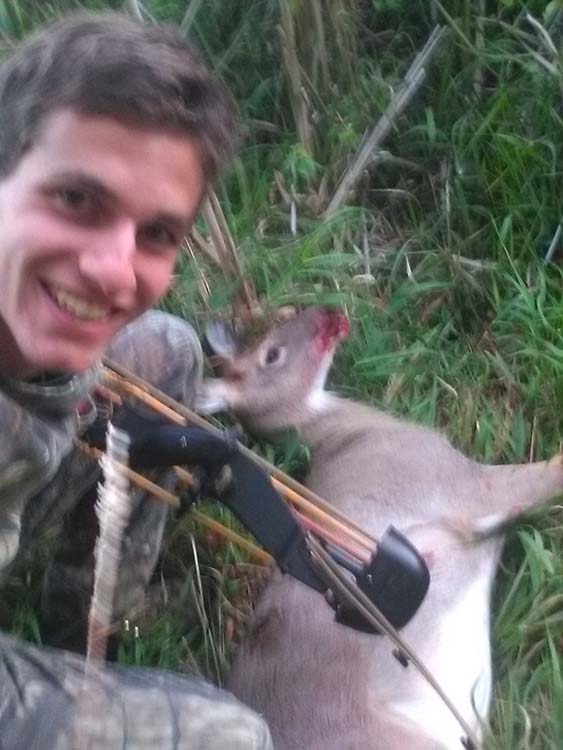
Name: Jeff Evans
Country Harvested: United States
State/Province: Kentucky
Year: 2021
Type of Game: Whitetail Deer
Equipment Used:
I’m shooting a reproduction of the 1959 kodiak by Bear that my wife bought for me it’s 55 pounds at 28 inches. My arrows are a 400 spine trophy hunter tipped with the 125 grain woodsman elite. Made a 25 yard shot.
Additional Info:
Photo: 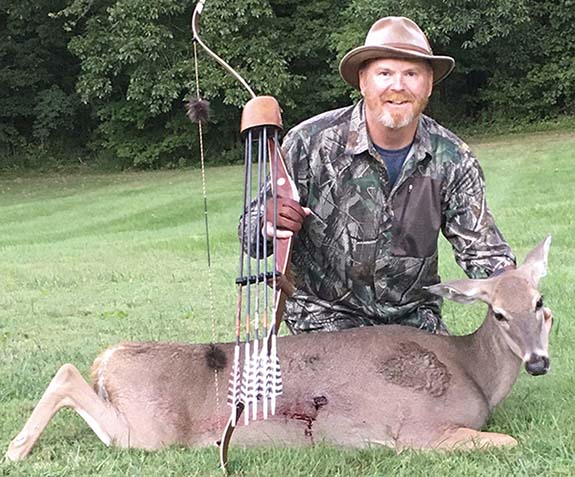
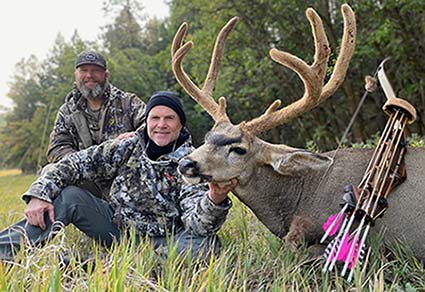
As an outfitter and guide in Colorado I am constantly amazed at how ill prepared some people are that show up at my camp. I once had a client miss an animal with me and then say, “Those broadheads seem to fly different than my field points.” Needless to say, he was ill prepared.
Besides guiding clients myself, I am also occasionally a client at other outfitters camps. I usually go on one or two guided hunts every year. I have had some great hunts and others have been a waste of time, money and in some cases even dangerous. To help avoid a bad experience and to help you up your odds on a guided hunt, I have compiled a list of things I check into before spending my money on a guided hunt.
This is more important than many people realize! A lot of outfitters unfortunately aren’t experienced when it comes to traditional bowhunting. I have been to places where blinds or treestands were set-up for shots at 30+ yards. It is important to either hunt with outfitters or guides that understand traditional equipment and it’s attributes and limitations or it is our job to explain it to them.
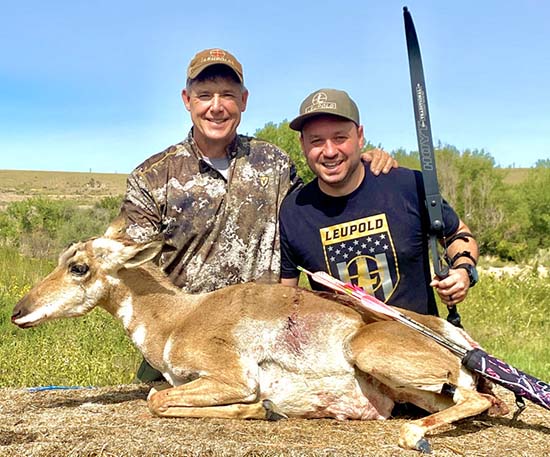
Will it be one on one or will you be sharing your guide with another hunter? It is worth knowing before you go. If your hunt isn’t a one on one guided hunt and that is what you want, talk to the outfitter. Some outfitters will offer a one on one ratio for a higher fee.
Make sure there are no hidden costs. Request in writing, a list of all costs including license fees or additional transportation costs. Is food and lodging included and is there a trophy or kill fee? These are all important questions.
Does that include travel days? Most guided hunts average 5 to 7 days, however, they all vary. Be sure you are happy with the number of days versus what you will be paying. If you want a longer hunt, some outfitters will allow hunters to extend their trip on a pay per day basis. This is always important to me since I have already invested my money and time getting to camp, one or two extra days may be all I need to get a shot opportunity. Remember things like weather can also knock a few days off of a hunt in a hurry. Bring this up ahead of time. It may save your trip.
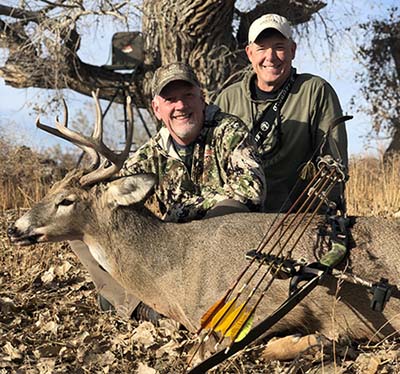
Obviously, physical ability varies from person to person as do the requirements of different hunts and terrains. A hunter that is totally out of shape can easily walk a hundred yards from a truck to a tree stand, whereas an elk or lion hunt will demand a totally different set of requirements. How much walking will we be doing on average?
How much stand hunting? Will we be using horses? Make sure you can do what may be required.
Ask for specific numbers. How many bow hunters did you take last year for elk? Out of those, how many harvested elk? How many had shot opportunities? In fairness to the outfitter, I like to ask about shot opportunities, not necessarily numbers harvested. Also bear in mind that sometimes a low success rate may be due to bad weather, inexperienced or out of shape hunters. Try to feel the guide or outfitter out so you understand why the success rate is high or low.
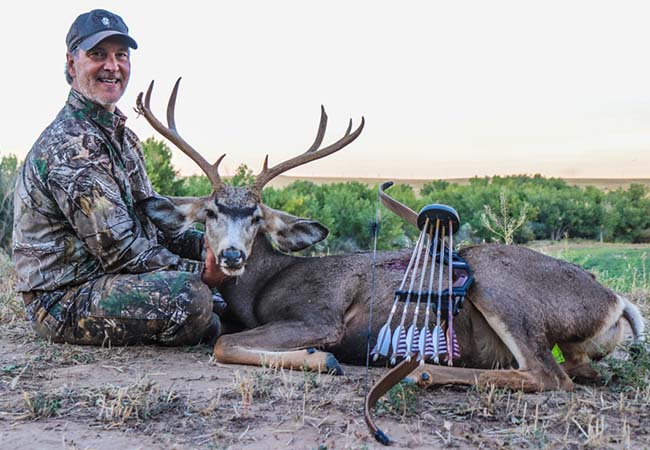
Most outfitters have a prepared reference list. Of course, most reference lists are filled with hunters that harvested animals. Ask for a list of specific references and, if possible, for hunters in your state that have hunted with the outfitter. Be sure to ask for bow hunting references that hunted the same area you will be in, or that at least hunted the same species you are planning to hunt. Talking to other bow hunters can often give you a good feel of what to expect from terrain to guides. Also, ask for references of hunters who were not successful. Sometimes your best information will come from these guys.
A simple call to the area game officer can answer this one. If the game officer advises against the outfitter, I wouldn’t go.
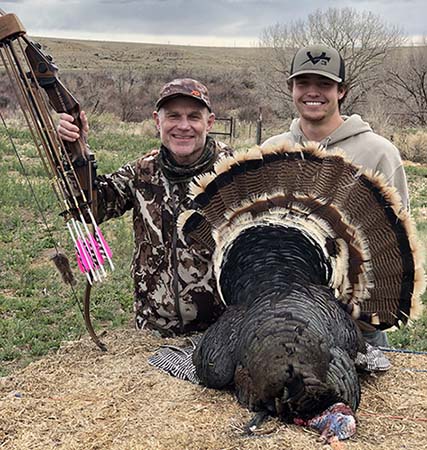
Some pubic land areas are great, and others are crowded with public hunters. Find out about where you will be or how many other people you will likely encounter. Most outfitters will charge more to hunt private ranches. Just be sure to ask how much land they have available to hunt on. If its 5 acres and 7 people will be hunting it, it may not be such a great deal. Usually an outfitter will charge more to hunt private ranches. I also always ask how much land they have available to hunt on.
Most outfitters will have a list of items they recommend for the hunt you are going on. If they don’t offer one, ask for one.
In general, most of my bad experiences have come from outfitters I have not communicated with enough. I have also had some tremendous experiences with outfitters that will provide me with fond memories for the rest of my life. And while some of these great memories include harvesting an animal many of them did not.
My next column will be about how to be a good client for an outfitter. Your honesty makes a difference!
As always… Have Fun, Fred
By: Fred Eichler
Everything Eichler
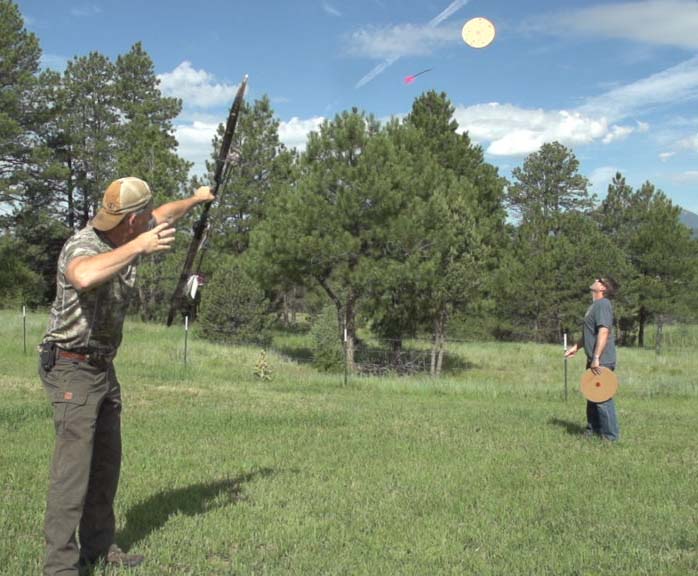
If you have not shot aerials with your traditional bow yet, then you are truly missing out on one of the coolest things you can do with a trad bow besides hunting.
One of the reasons I love shooting aerials is I remember all the old films of Fred Bear shooting thrown discs with his recurve. I was always intrigued and knew that one day I wanted to be able to do that.
I am proud to report that I am not only routinely shooting aerials, but I have also introduced a lot of my friends as well as our boys to the sport. Shooting just fixed targets all the time can start to get old. As a parent I was constantly looking for ways to keep my kids outside in the great outdoors and introducing them to new ways to enjoy archery. That includes practice, bowhunting and of course safety. From paper targets I graduated the kids to 3-D targets. As a way to keep things fun and exciting the next step was discs in the air. Shooting aerials is tons of fun, great practice, and a terrific way to either get kids involved or to help keep them interested in shooting a bow. It also looks pretty impressive and can be picked up easily with a little practice.

What You Need– The nice thing about aerials is that targets are inexpensive to buy. Three Rivers Archery has aerial targets available for purchase. I suggest a few of them so you don’t have to keep stopping the fun to pick up one target. If you’re into building your own, you can simply cut circles out of cardboard and start gluing them together. Usually, 5-6 layers is plenty to stop an arrow. I suggest starting with a 15″ circle and try working down to something tougher like a 6-8 inch disc.
After either purchasing or making your targets you now need some Flu Flu arrows. If you have never heard of a Flu Flu arrow Wikipedia defines it as “a type of arrow specifically designed to travel a short distance. Such arrows are particularly useful when shooting at aerial targets or for certain types of recreational archery where the arrow must not travel too far.” The term Flu Flu arrow in my opinion is not really accurate because you are shooting the same arrow you target shoot or hunt with. The only difference is the feathers. It also doesn’t matter if you use arrow shafts made of wood, aluminum or carbon. They will all work fine with the addition of larger feathers.
The history of the Flu Flu dates back to Maurice Thompson’s book, “The Witchery of Archery,” first published in 1878. In it Maurice talks of a Native American who used “broad-feathered arrows which he had named “Floo Hoo” on account of a peculiar roaring sound it made while flying through the air.

To sum it up, basically it is just oversize feathers placed on your regular hunting arrow that acts as a wind drag preventing the arrow from going very far. There are tons of combinations and ways of applying the feathers to achieve the desired result. The easiest way to get Flu Flu’s is to order them from Three Rivers Archery. Oftentimes local archery shops can also fletch them up for you as well. If you would rather make your own, you can just purchase some full length feathers and make them yourself. There is a learning curve here and I would suggest purchasing a video or following instructions on-line to help you fletch up your arrows correctly.
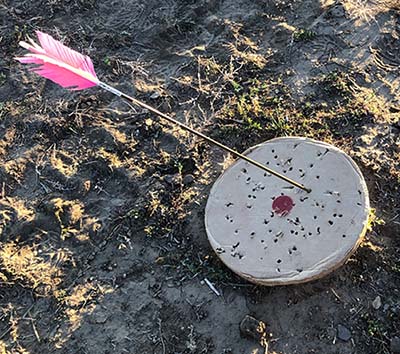
Once you have some Flu Flu’s fletched up you can enjoy some great fun target shooting. Besides aerial disc shooting, Flu Flu’s are also great option for close range hunting on small game like birds, squirrels, rabbits or anything where you don’t want your arrow to head out of sight. As always be safe and have fun…. Fred
By: Fred Eichler
Everything Eichler
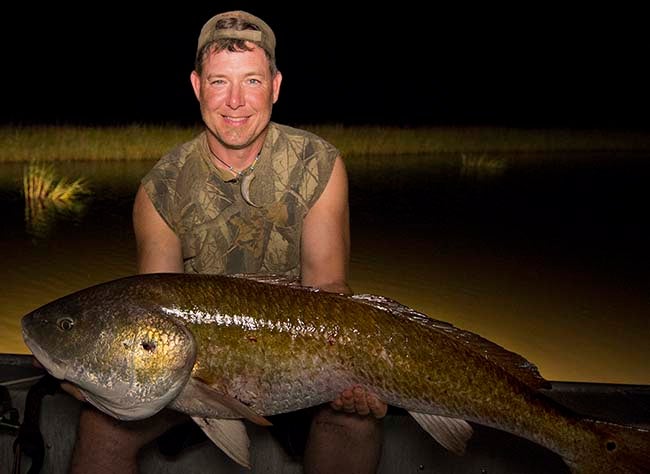
I bit on the bowfishing bug early in life. I am known for taking things to the extreme and bowfishing was no different. It started with carp and then I graduated to sharks, stingrays, alligators, gar and all sorts of fish. It is not only fun but you can also pack some great meat in the freezer. It is just white instead of red.
Traditional Gear and Bowfishing just go together. Fortunately for us there are tons of equipment options available for traditional bows. Like many things, options range from gear for the occasional bowfisherman that doesn’t want to drop a lot of cash, to gear for the addicted bowfisherman that spends more on their bowfishing boat, lights and platform than they do on their vehicle. Yes, I do know people like that…..sorry mom.
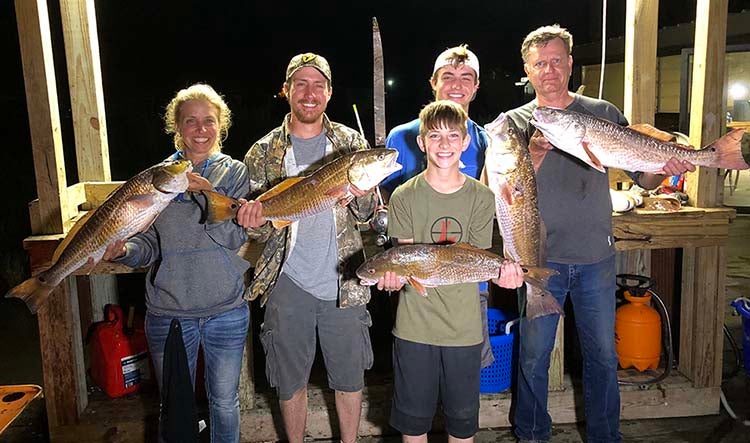
Excluding a boat which is nice but not mandatory for bowfishing, you can get all you need to bowfish for anywhere from twenty dollars to a hundred and twenty. The two main types of bowfishing reels are the hand wind or the reel style. Hand reels are inexpensive and great starters. They come in two different types: One mounts to a stabilizer bushing and the other is a tape-on model that works well for longbows and recurves without a bushing.
These hand reels generally retail for under twenty dollars and are a good option for beginners or experienced shooters on a budget. Although this inexpensive system works well, it is slow and makes a quick follow up shot impossible unless another bow and spool are rigged up and ready nearby.
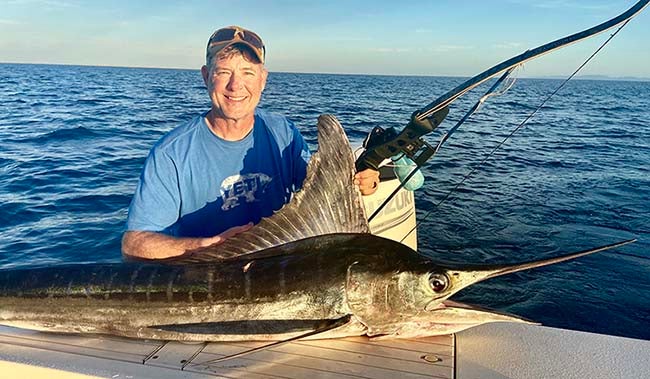
For the reel style bowfishing rig there are two options available. I have used both and would recommend either one. One is the AMS retriever bowfishing reel. The retriever has a handy finger regulated drag and a twist free bottle that your line goes into. It also sports a fast line crank, which speeds up your recovery time. The Retriever reel retails for approximately one hundred dollars.
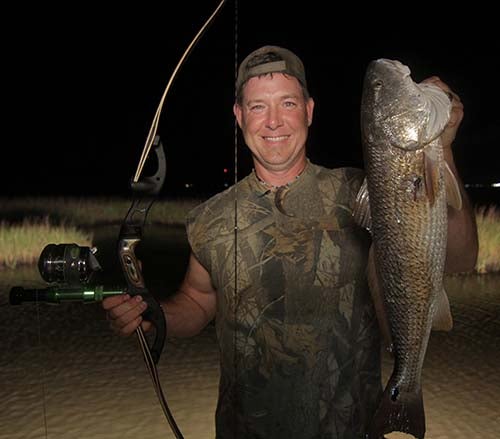
Another popular choice is the Muzzy Xtreme Duty Bowfishing reel. It comes with 100 feet of braided 200 lb test bowfishing line and is easy to use. It has a familiar push button release and a standard reel adjustable drag. This set up retails for around 45 dollars.
Bowfishing arrows are pretty simple and inexpensive. Most pro-shops usually carry only one or two models. The two most common are all fiberglass shafts or carbon infused shafts. The solid fiberglass shafts I use are extremely durable and retail for anywhere from $15-$25, which includes a bowfishing head and safety slide. Even more important than arrow selection is the type of fish head you choose. There are many bowfishing heads that look great in the display case, but are not so great in a fish. Choose a rugged, functional head. There are few things more frustrating than missing a shot at a darting fish and then pulling up a bent or broken head. One thing to look for is a head that has a short distance from the point to the barbs. These require less penetration for the head to be held securely. This is especially important with large fish or when shooting bows with low poundage.
Traditional Bows are perfect for bowfishing because most of your shots are snapshots at moving fish. Just the ticket for a longbow or a recurve.
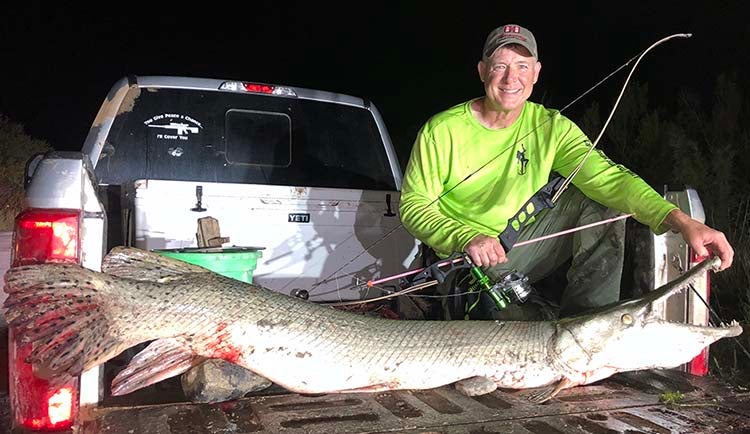
Don’t forget that you have to shoot low to compensate for water refraction. That is a fancy word for “the fish isn’t where it looks like it is.” I’m sure a smarter person than me could explain the formula for exactly how low you have to shoot based on how deep the fish is. It is really more a matter of S.W.A.G That’s another term for Just shoot low and hope. I should warn any newbies that bowfishing is an addictive smelly sport. So if your currently having a problem finding a spouse that will put up with your bowhunting addiction, I wouldn’t add this one. Have Fun!
By Fred Eichler
Everything Eichler

Whitetails are the most frequently hunted species in North America. This is partially due to the fact that they are found in huntable numbers in 43 states. In my opinion these plentiful deer are also one of the most difficult big game species to hit with an arrow. Before I proceed I should explain that I feel the whitetails smaller cousin the Coues deer is the most difficult. Also, I didn’t say most difficult to hunt. I said most difficult to hit with an arrow.
The main reason whitetails are tough to hit is that they spook easily and have amazingly fast reflexes, even more so when they are pressured by hunters or other natural predators. I have been fortunate to have had a lot of my hunts captured on video over the last sixteen years. By watching slow motion video of over fifty whitetails I have shot on video, I can say that less than five percent of those showed no reaction before my arrow struck. The majority of these deer were moving when the arrow hit them. The reason they were moving is that they were beginning their natural evasive maneuver which is to flee. To run a deer needs to load its muscles. To do this a deer must go down first before running. This is commonly called “ducking the string,” when in fact the deer isn’t intentionally ducking at all. It is just trying to get out of there because it heard something close by that wasn’t a natural sound. To test why they duck the string for yourself, it is fun to take a video camera and film yourself. Start in a standing position, then as quickly as you can, RUN! You will see that you will have to drop a foot or more before you can engage your muscles so you are able to run. That is exactly what the deer have to do. Besides dropping, most deer start to whirl as well and usually away from the sound. The reason for this is that deer have exceptional hearing and fast reflexes. For example the speed of sound is close to 1,100 feet per second. An arrow shot out of a fast traditional bow is going about 200 feet per second and slowing down fast down range. A deer’s reaction time is measured in milliseconds, so it is pretty obvious that deer can and usually do react in some way before your arrow arrives on scene.

I have also used my DVR to record other whitetail hunts on TV and find that regardless of the bow used, in slow motion they almost all react as well, so it’s not just me.
I share this because a lot of my friends and acquaintances have shared stories of whitetails they missed. Most say they just missed high. My comment to them is, “maybe you didn’t miss.” The deer just wasn’t there when your arrow got there.
Just last month when I was in Illinois hunting whitetails, I had another deer duck my arrow. It was a big mature whitetail in an area that gets pressured during archery, muzzleloading and rifle season. I had seen the big buck make a scrape a few days before and I decided to move a stand to hunt the scrape. My stand was about eighteen to twenty yards from the scrape and my friend and cameraman Jake Kraus was sitting above me hoping to video the buck if he came in. As luck would have it the same buck ran into the scrape and started raking the scrape with his front right hoof. I drew my Buffalo recurve and released. It was one of those shots that as soon as you let the string drop you just know it is gonna be great. Except it wasn’t, the buck fell over instantly, his spine was severed. It was a fatal shot but the arrow hit way above the tuft of hair I was aiming at. On camera, I said I missed and got lucky to harvest the buck. I was also lucky a spike didn’t step in range first or I would have been eating him instead.
That evening Jake was reviewing the footage and said, “You didn’t miss.” He showed me the footage by advancing it frame by frame and my arrow would have hit the deer right above the heart had he not dropped at the shot. What’s interesting to me is that I would have said the deer didn’t react. It happens so fast that without the video I would have assumed I made a bad shot. The fact is that bad shots sometimes happen to all of us, but in this case the shot was good but the deer’s reaction time almost caused me to miss him or even worse, wound him.
So what can we do to avoid it? One thing we can do is anticipate the deer’s reaction and shoot to hit low on the vitals. That way if a deer ducks the shot will still be fatal.
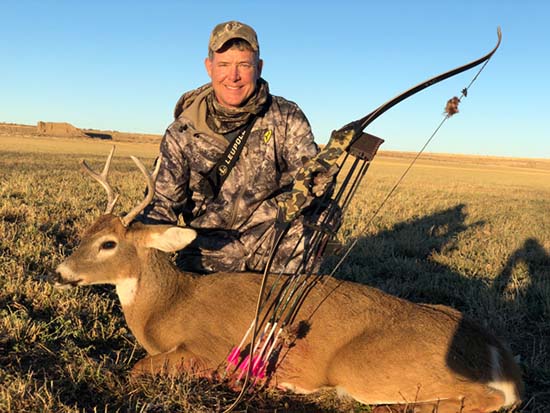
Other things we can do is to make sure our bows are shooting as quietly as possible. Properly spined arrows, heavy arrows, loose fitting nocks, string silencers and moleskin on bow tips where applicable all help. Additionally, I have shortened the range that I will shoot at a whitetail. Even if you are comfortable shooting at twenty five or thirty yards, the odds of a whitetail not moving that far out before the arrow gets there are slim. Fortunately for us there are situations which can reduce the odds of a deer ducking the string.
Although deer use all their senses to detect danger, we will assume that we are in range of a deer that has not seen us, smelled us or heard u up to the point that we shoot. We will also assume we can draw without being detected. Now all we need to worry about is the deer’s reaction to our shot. We will also assume that our bow is as quiet as we can make it and it only emits a soft strum when shot.
On a quiet day that soft strum sounds loud to a spooky whitetail. So if it is one of those dead calm days where you can hear a squirrel in the leaves a hundred yards away you can plan on a reaction from the deer. On days like this I like to keep shots close and I intentionally pick a spot low on the bottom third of the bucks chest. I also pick a spot a few inches behind the crease of the shoulder. By aiming here if the deer doesn’t drop and start to whirl I will have a low lung hit. By shooting here, if the buck drops and starts to whirl I will still have a fatal shot. To improve the odds of a deer not reacting or having a minimal reaction it is bet to shoot on windy, rainy or snowy days. On these days the deer’s sense of hearing is constantly bombarded by the sound of rain or snow on leaves and branches bumping and other associated sounds. On these days the deer’s reaction is usually less drastic, if there is any reaction at all.

Other variables that reduce or stop a deer from reacting is if it is traveling with other deer. A deer traveling with one or more deer constantly make some noise going through the woods. I have noticed a lone deer is more likely to react to the sound of the bow than a deer with company. A deer that is distracted because it is rubbing a tree, rutted up, distracted by other deer, walking through leaves or some other loud environment or making a scrape are also usually less likely to react drastically.
Even though the buck in the beginning of this article did drop almost seven inches as near as we could measure from looking at the video as with all animals and hunting situations each one is unique. I once missed a buck in Montana that ducked completely out of the flight of my arrow. I had never seen a reaction that drastic. In speaking with other hunters and showing our footage, we learned that same buck had been missed a week earlier by another bowhunter. Talk about a quick reaction! The best thing we can do as bowhunters who deeply respect the game we pursue is to keep our shots close and prepare for the worst case scenario. In my opinion it is always best to shoot at the bottom third of any animal you shoot at with a bow.
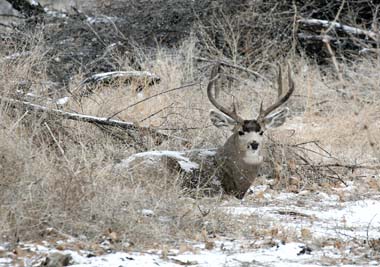
Even though whitetails get the most press as being the most common arrow duckers, the fact is that I have seen almost all big game react in some degree to the noise of a bow being shot. I have witnessed Antelope, Mule Deer, Blacktail Deer, Elk, Sheep, and even moose, all react to traditional bows being shot.
Even an arrow shot through the quietest longbow is still susceptible to being ducked by an animal on a quiet day. Even more so if that animal is alert. I have also been amazed on more than one occasion when small game like a rabbit has dropped and whirled before my arrow hit its mark. The most notorious small game animals are bobcats, coyote and fox. I always try and pick a spot low on the chest and back a few inches on these quick critters as well. Again, video has shown me time and time again that there is a lot more happening when we shoot than we usually realize with our eyes.
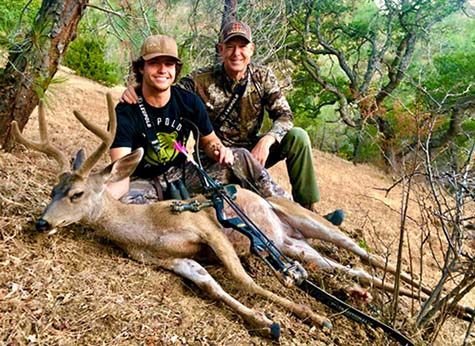
I know some people might be thinking that they have never had a deer react to the sound of a quiet longbow or recurve. If you haven’t, you are lucky, the majority of deer do react in some way before the arrow hits. Also, without a video camera it is hard to say how much they react. I only learned from watching a lot of deer reactions in slow motion. Also, if your beating yourself up over a deer you missed high on, maybe….”YOU DIDN’T MISS” Good luck, Have fun and aim low!…
By: Fred Eichler
Everything Eichler
Name: Bill Buxton
Country Harvested: United States
State/Province: Alaska
Year: 2002
Type of Game: Caribou – All species
Equipment Used:
Dale Dye trails end recurve, hand made cedar arrow 700+ grains.
Additional Info:
Photo: 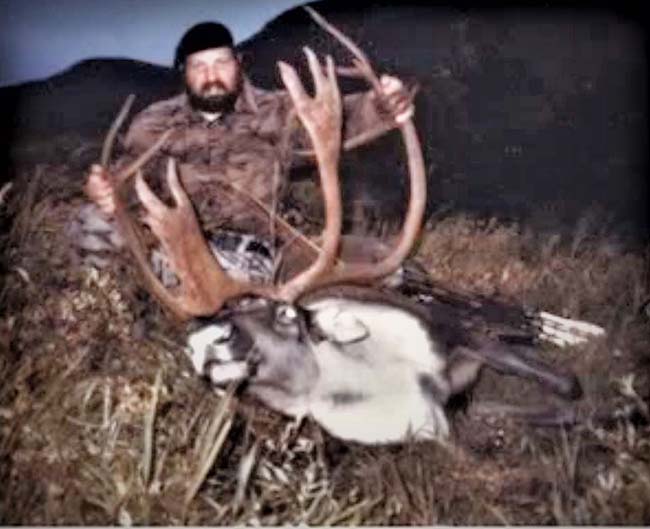
Name: Kenneth Logan
Country Harvested: United States
State/Province: Arizona
Year: 2020
Type of Game: Hogs & Javelina
Equipment Used:
Bear Montana Long Bow 60#, Arrows assembled from Three Rivers Catalog with Port oxford ceder shafts and Zwickey Eskimo 125 grain broad heads,
Additional Info:
Javelina Boar taken 02-07-2021 Arizona
Photo: 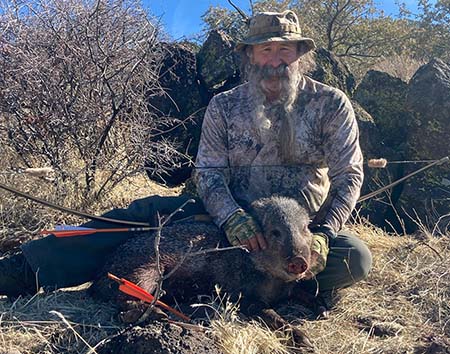
Name: Jorge ZARZAR
Country Harvested: Mexico
State/Province: OTHER
Year: 2020
Type of Game: Trophy Room
Equipment Used:
Palmer recurve take down
50#, carbon express heritage shafts
Zwickey Eskimo 170 grs. Broadheads
Additional Info:
Photo: 